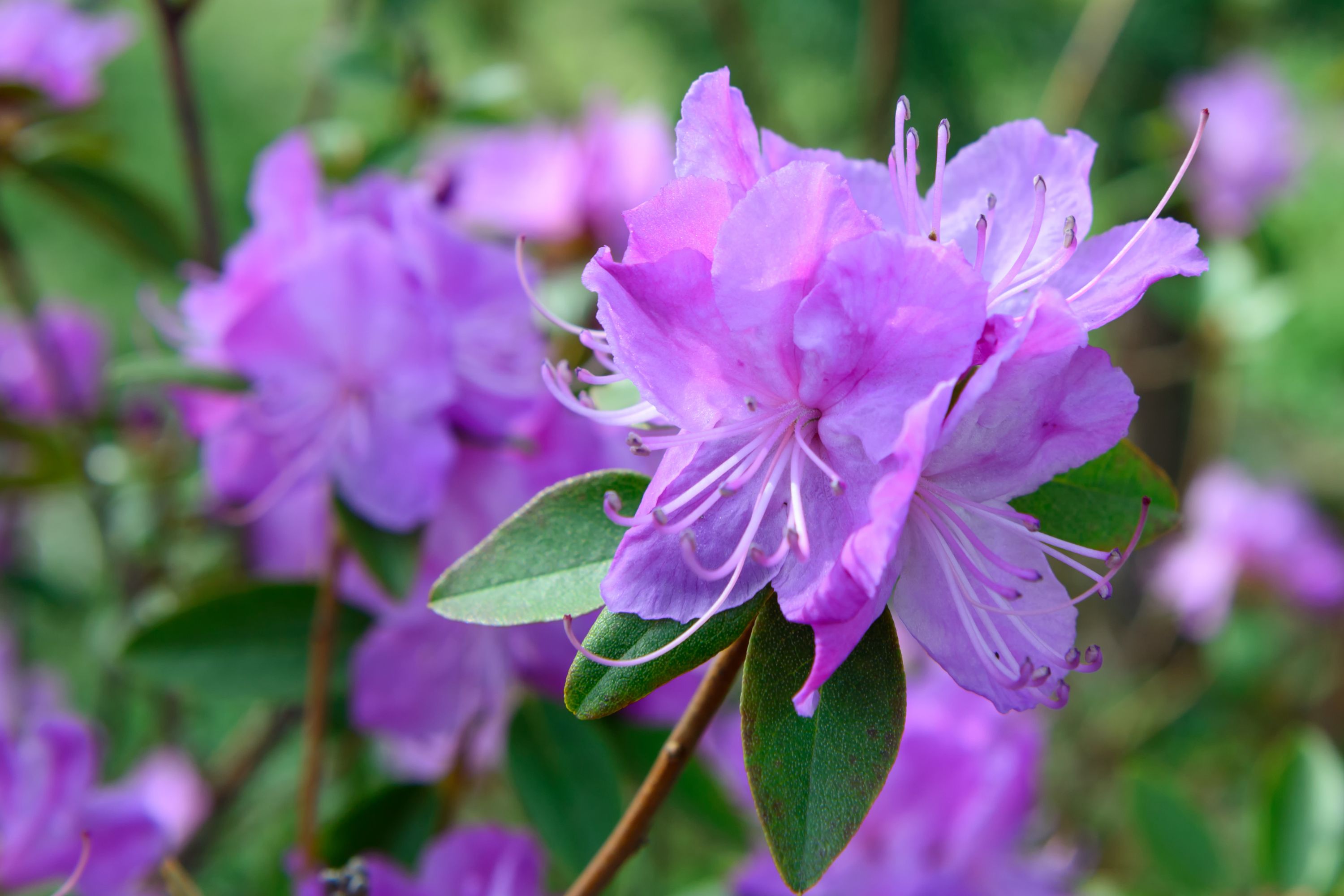Korean rhododendron
(Rhododendron mucronulatum)

Description
Rhododendron mucronulatum, commonly known as Korean rhododendron, is a species of flowering plant in the family Ericaceae. This stunning plant is native to Korea and is an ornamental shrub commonly cultivated in gardens and parks throughout the world. The plant is known for its showy, fragrant flowers that bloom in early spring before the foliage emerges. In this article, we will delve into the details of Rhododendron mucronulatum, exploring its characteristics, habitat, uses, and cultivation. Taxonomy and Nomenclature Rhododendron mucronulatum was first described by Joseph Decaisne in 1847. The genus Rhododendron belongs to the family Ericaceae, which includes many other ornamental plants such as azaleas, blueberries, and cranberries. The species epithet mucronulatum refers to the small, pointed tips of the leaves. Characteristics Rhododendron mucronulatum is a deciduous shrub that can grow up to 2 meters tall and wide. The leaves are oblong to elliptical, 4-9 cm long, and 2-4 cm wide, with small, pointed tips. The upper surface of the leaves is dark green, while the lower surface is pale green. The flowers are large, funnel-shaped, and come in shades of pink, purple, or lavender. The flower buds are often pink or red, adding to the plant's ornamental value. The flowers have a sweet fragrance and appear in clusters of up to 10. The fruit is a small, dry capsule that contains numerous small seeds. Habitat and Distribution Rhododendron mucronulatum is native to Korea, where it grows in mountainous regions and along streams and riverbanks. The plant prefers moist, well-drained soil and partial shade. In its native habitat, Rhododendron mucronulatum is often found growing alongside other rhododendron species, as well as azaleas and magnolias. Uses Rhododendron mucronulatum is primarily grown as an ornamental plant in gardens and parks. The plant's showy flowers and attractive foliage make it a popular choice for borders, hedges, and specimen plants. The plant is also commonly used in bonsai cultivation due to its small leaves and attractive flowers. In Korea, the plant has traditionally been used in herbal medicine to treat a variety of ailments, including fever, headaches, and respiratory problems. Cultivation Rhododendron mucronulatum is a relatively easy plant to cultivate and care for. The plant prefers moist, well-drained soil that is rich in organic matter. It also prefers partial shade, although it can tolerate full sun in cooler climates. When planting, it is recommended to add peat moss or compost to the soil to improve drainage and fertility. The plant should be watered regularly, especially during dry periods, and fertilized with a balanced fertilizer in the spring. Pruning is essential for maintaining the plant's shape and encouraging new growth. The best time to prune Rhododendron mucronulatum is immediately after flowering. At this time, the plant can be pruned to remove dead or damaged wood and to shape the plant as desired. Pests and Diseases Rhododendron mucronulatum is generally free of serious pest and disease problems. However, the plant can be susceptible to a few common issues. Rhododendron lace bug is a common pest that can damage the plant's foliage, causing it to turn yellow or brown. Powdery mildew and leaf spot can also occur, especially in humid conditions. To prevent these issues, it is important to maintain good plant hygiene, including removing any fallen leaves or debris from around the base of the plant. It is also recommended to avoid overhead watering, as this can increase the risk of fungal diseases. Propagation Rhododendron mucronulatum can be propagated through several methods, including seed, cuttings, and layering. Seed propagation can be challenging, as the seeds require a period of cold stratification before they will germinate. Cuttings can be taken in the summer or fall and rooted in a mixture of perlite and peat moss. Layering is another method of propagation, where a low branch is bent down to the ground and covered with soil, allowing it to develop roots before being cut from the parent plant. Conservation Status The conservation status of Rhododendron mucronulatum is currently not evaluated on the IUCN Red List of Threatened Species. However, as a widely cultivated ornamental plant, it is not considered to be at risk of extinction in its native range. Nonetheless, as with all species, conservation efforts to preserve the plant's genetic diversity and natural habitat are important for its long-term survival. In Korea, where the plant is native, conservation efforts are underway to protect the natural habitats where Rhododendron mucronulatum grows, as well as other rhododendron species, from habitat destruction and over-harvesting. Conclusion Rhododendron mucronulatum is a stunning plant that is highly valued for its ornamental value. Its showy flowers, attractive foliage, and sweet fragrance make it a popular choice for gardens and parks around the world. Although it is native to Korea, the plant is relatively easy to cultivate and care for, making it a great choice for gardeners of all levels of experience. With proper care, Rhododendron mucronulatum can thrive and provide beauty for years to come.
Taxonomic tree:







